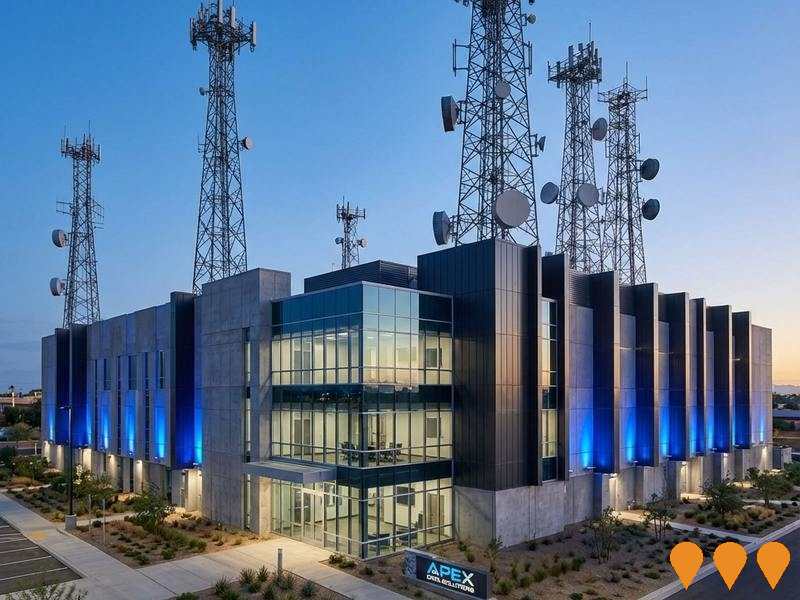Chart Color Schemes
est. as @ -- *
ABS ERP | -- people | --
2021 Census | -- people
Sales Activity
Curious about local property values? Filter the chart to assess the volume and appreciation (including resales) trends and regional comparisons, or scroll to the map below view this information at an individual property level.
Find a Recent Sale
Sales Detail
Population
Karoonda - Lameroo has shown very soft population growth performance across periods assessed by AreaSearch
Karoonda - Lameroo's population is around 2,960 as of Aug 2025. This reflects an increase of 39 people since the 2021 Census, which reported a population of 2,921 people. The change is inferred from the estimated resident population of 2,956 from the ABS as of June 2024 and an additional 17 validated new addresses since the Census date. This level of population equates to a density ratio of 0.30 persons per square kilometer. Population growth for the area was primarily driven by overseas migration.
AreaSearch is adopting ABS/Geoscience Australia projections for each SA2 area, released in 2024 with 2022 as the base year. For areas not covered and years post-2032, SA State Government's Regional/LGA projections are adopted with adjustments made employing a method of weighted aggregation of population growth from LGA to SA2 levels. Considering projected demographic shifts, lower quartile growth of national regional areas is anticipated. The area is expected to increase by 82 persons to 2041 based on the latest population numbers, reflecting an increase of 2.6% in total over the 17 years.
Frequently Asked Questions - Population
Development
AreaSearch assessment of residential development drivers sees a low level of activity in Karoonda - Lameroo, placing the area among the bottom 25% of areas assessed nationally
Karoonda - Lameroo has seen approximately 14 new homes approved annually over the past five financial years, totalling 70 homes. As of FY-26, there have been 0 approvals recorded so far. The population decline in recent years has resulted in adequate development activity relative to population size, benefiting buyers with more affordable housing options, as new properties are constructed at an average value of $196,000, below regional norms. This financial year, $42.0 million in commercial development approvals have been recorded, indicating high levels of local commercial activity.
Compared to the Rest of SA, Karoonda - Lameroo records about three-quarters the building activity per person and ranks among the 36th percentile nationally, offering more limited choices for buyers but supporting demand for existing homes. All new construction has consisted of detached houses, maintaining the area's traditional low density character with a focus on family homes. The estimated population per dwelling approval is 480 people, reflecting its quiet development environment.
Population forecasts indicate Karoonda - Lameroo will gain 78 residents by 2041. At current development rates, new housing supply should comfortably meet demand, providing good conditions for buyers and potentially supporting growth beyond current population projections.
Frequently Asked Questions - Development
Infrastructure
Karoonda - Lameroo has emerging levels of nearby infrastructure activity, ranking in the 20thth percentile nationally
No infrastructure changes or major projects have been identified by AreaSearch as likely to impact this area. Key projects include SA Water Capital Work Delivery Contracts, SA Public Housing Maintenance and Services Contracts, Project EnergyConnect (scheduled for completion in 2027), and EnergyConnect.
Professional plan users can use the search below to filter and access additional projects.
INFRASTRUCTURE SEARCH
 Denotes AI-based impression for illustrative purposes only, not to be taken as definitive under any circumstances. Please follow links and conduct other investigations from the project's source for actual imagery. Developers and project owners wishing us to use original imagery please Contact Us and we will do so.
Denotes AI-based impression for illustrative purposes only, not to be taken as definitive under any circumstances. Please follow links and conduct other investigations from the project's source for actual imagery. Developers and project owners wishing us to use original imagery please Contact Us and we will do so.
Frequently Asked Questions - Infrastructure
Low and Mid-Rise Housing Policy
State-wide NSW planning reforms via amendments to the State Environmental Planning Policy to enable more diverse low and mid-rise housing (dual occupancies, terraces, townhouses, manor houses and residential flat buildings up to 6 storeys) in well-located areas within 800 m of selected train, metro and light-rail stations and town centres. Stage 1 (dual occupancies in R2 zones statewide) commenced 1 July 2024. Stage 2 (mid-rise apartments, terraces and dual occupancies near stations) commenced 28 February 2025. Expected to facilitate up to 112,000 additional homes over the next five years.
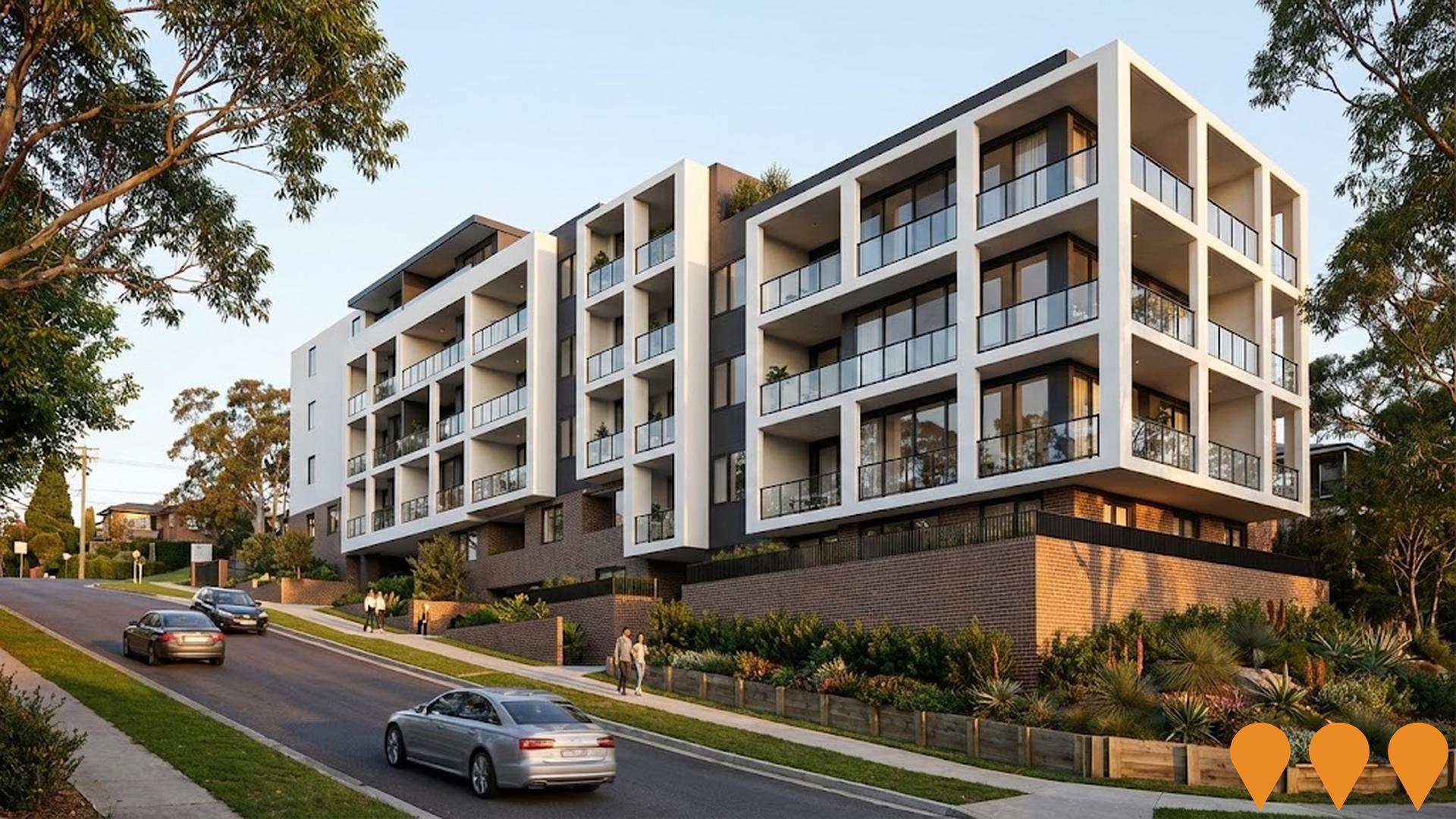
Victorian Renewable Energy Zones
VicGrid, a Victorian Government agency, is coordinating the planning and staged declaration of six proposed onshore Renewable Energy Zones (plus a Gippsland shoreline zone to support offshore wind). The 2025 Victorian Transmission Plan identifies the indicative REZ locations, access limits and the transmission works needed to connect new wind, solar and storage while minimising impacts on communities, Traditional Owners, agriculture and the environment. Each REZ will proceed through a statutory declaration and consultation process before competitive allocation of grid access to projects.
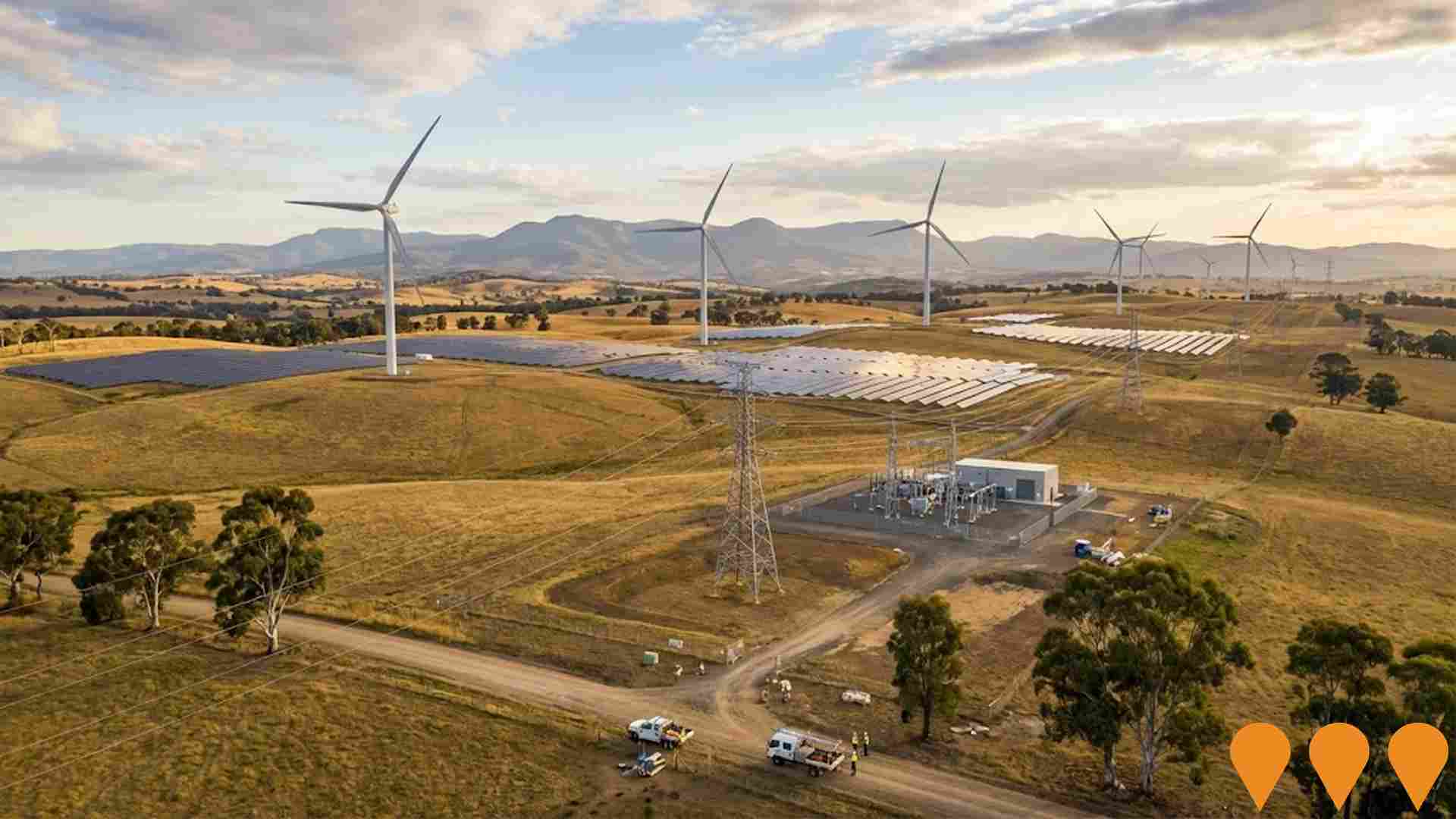
Enabling Infrastructure for Hydrogen Production
Australia has completed the National Hydrogen Infrastructure Assessment (NHIA) to 2050 and refreshed its National Hydrogen Strategy (2024). The programmatic focus has shifted to planning and enabling infrastructure through measures such as ARENA's Hydrogen Headstart and the Hydrogen Production Tax Incentive (from April 2025). Round 2 of Hydrogen Headstart consultation occurred in 2025. Collectively these actions aim to coordinate investment in transport, storage, water and electricity inputs linked to Renewable Energy Zones and priority hubs, supporting large-scale renewable hydrogen production and future export supply chains.
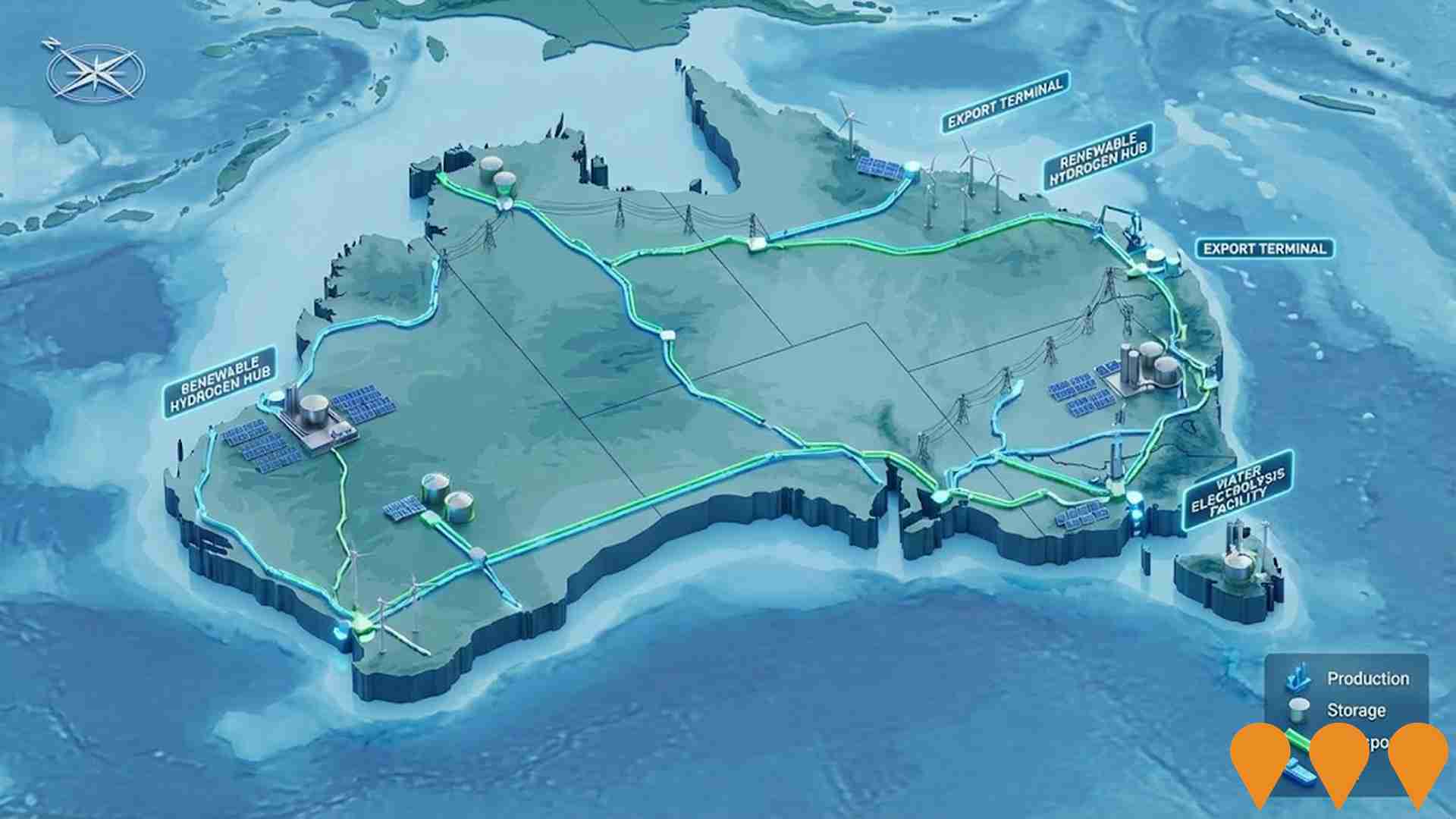
Bulk Water Supply Security
Nationwide program led by the National Water Grid Authority to improve bulk water security and reliability for non-potable and productive uses. Activities include strategic planning, science and business cases, and funding of state and territory projects such as storages, pipelines, dam upgrades, recycled water and efficiency upgrades to build drought resilience and support regional communities, industry and the environment.

EnergyConnect
Australia's largest energy transmission project. A new ~900km interconnector linking the NSW, SA and VIC grids. NSW-West (Buronga to SA border and Red Cliffs spur) was energised in 2024-2025, connecting the three states via the expanded Buronga substation. NSW-East (Buronga-Dinawan-Wagga Wagga) is under active construction with substation upgrades at Wagga Wagga completed in June 2025 and works well advanced at Dinawan and Buronga. Full 800MW transfer capability is targeted after completion of the eastern section and inter-network testing, expected by late 2027.

Regional Housing Fund (Victoria)
A $1 billion Homes Victoria program delivering around 1,300 new social and affordable homes across at least 30 regional and rural LGAs, using a mix of new builds, purchases in new developments, renewals and refurbishments. Delivery commenced in late 2023 with early completions recorded; overall fund completion is targeted for 2028.

Project EnergyConnect
Project EnergyConnect is a new 900-kilometre electricity interconnector (transmission line) to enhance transfer capacity between South Australia and New South Wales, with a connection to Victoria. It is delivered in two stages: SA Section (Stage One, 206 km, 150 MW capacity) and NSW Section (Stage Two, 700 km, 800 MW capacity), including new substations, transmission lines, and upgrades.
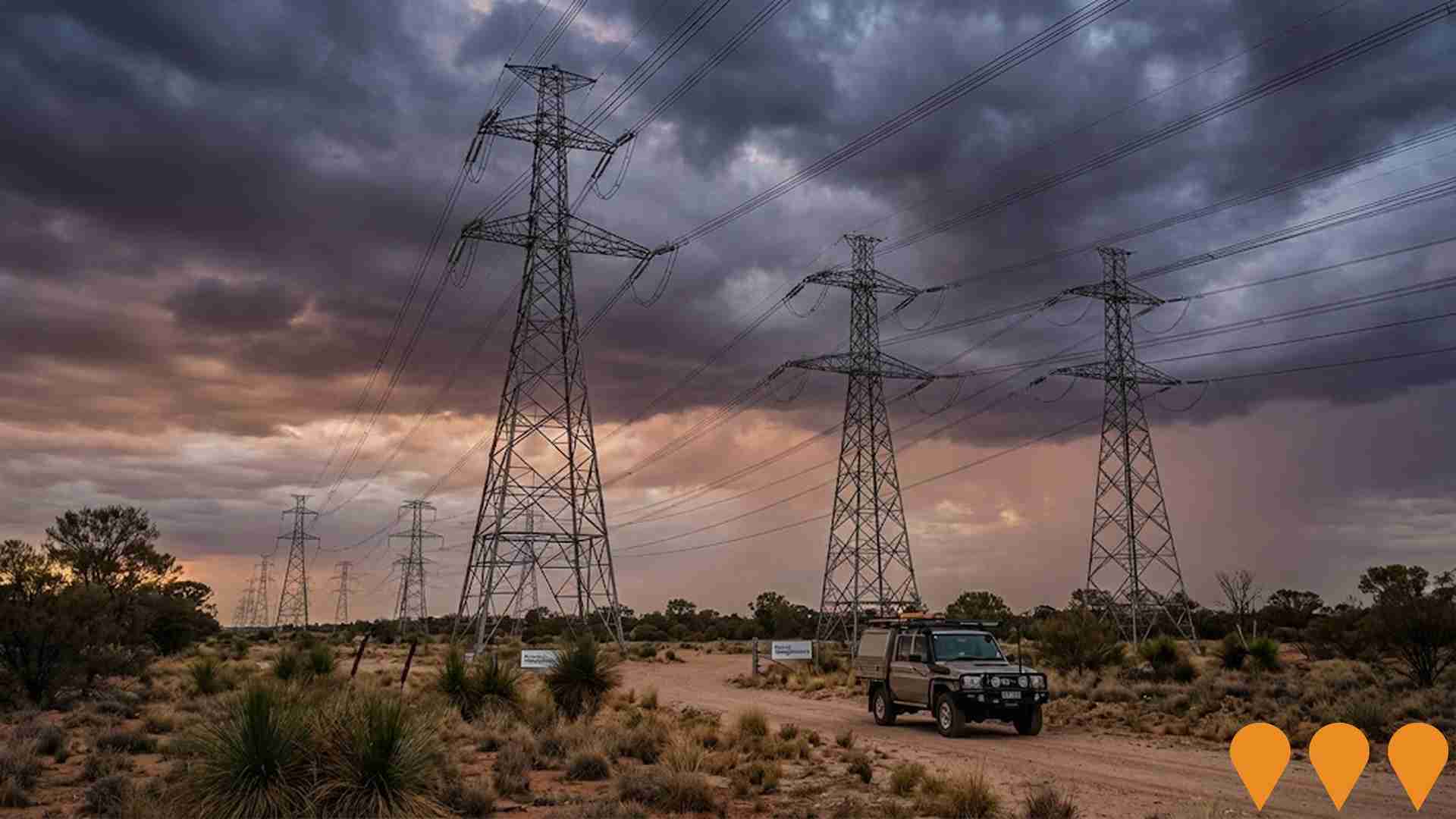
SA Water Capital Work Delivery Contracts
SA Water's major infrastructure delivery program for water and wastewater systems across South Australia, with a record $3.3 billion investment from 2024 to 2028 to ensure reliable services, support housing growth, and maintain essential infrastructure.

Employment
Employment performance in Karoonda - Lameroo has been broadly consistent with national averages
Karoonda-Lameroo has a balanced workforce with white and blue collar jobs, diverse sector representation, and an unemployment rate of 2.6% as of June 2025. There are 1,523 residents employed while the unemployment rate is 2.0% lower than Rest of SA's rate of 4.6%.
Workforce participation stands at 57.9%, slightly higher than Rest of SA's 54.1%. Dominant employment sectors include agriculture, forestry & fishing, health care & social assistance, and education & training. The area specializes in agriculture, forestry & fishing with an employment share 3.6 times the regional level, while manufacturing shows lower representation at 1.9% compared to the regional average of 9.3%. Many residents commute elsewhere for work based on Census working population data.
Between June 2024 and June 2025, the labour force decreased by 2.3%, employment declined by 3.3%, causing unemployment to rise by 1.0 percentage points. Jobs and Skills Australia's national employment forecasts from May 2025 project overall growth of 6.6% over five years and 13.7% over ten years, but growth rates vary between sectors. Applying these projections to Karoonda-Lameroo's employment mix suggests local growth of approximately 4.3% over five years and 10.3% over ten years.
Frequently Asked Questions - Employment
Income
Income metrics place the area in the bottom 10% of locations nationally according to AreaSearch analysis
Karoonda - Lameroo had a median taxpayer income of $42,284 and an average of $47,531 in financial year 2022. This is lower than national averages, with Rest of SA having a median income of $46,889 and an average income of $56,582. Based on Wage Price Index growth from June 2022 to September 2025 (12.83%), current estimated incomes are approximately $47,709 (median) and $53,629 (average). According to the 2021 Census, household, family, and personal incomes in Karoonda - Lameroo fall between the 13th and 18th percentiles nationally. The earnings profile shows that 28.2% of the community earns between $800 and $1,499 annually (834 individuals), unlike surrounding regions where 27.5% fall within the $1,500 - $2,999 range. Housing costs are modest, with 94.1% of income retained, but total disposable income ranks at just the 23rd percentile nationally.
Frequently Asked Questions - Income
Housing
Karoonda - Lameroo is characterized by a predominantly suburban housing profile, with above-average rates of outright home ownership
In Karoonda - Lameroo, as per the latest Census evaluation, 96.6% of dwellings were houses while 3.4% consisted of semi-detached homes, apartments, and other types. This differs from Non-Metro SA's figures of 89.9% houses and 10.1% other dwellings. Home ownership in Karoonda - Lameroo stood at 54.8%, with mortgaged properties at 26.6% and rented ones at 18.6%. The median monthly mortgage repayment was $661, lower than Non-Metro SA's average of $1,083. Weekly rent in the area was recorded as $160, compared to Non-Metro SA's $220. Nationally, Karoonda - Lameroo's median monthly mortgage repayment is significantly lower at $661 than the Australian average of $1,863, and weekly rents are substantially below the national figure of $375.
Frequently Asked Questions - Housing
Household Composition
Karoonda - Lameroo features high concentrations of lone person households, with a lower-than-average median household size
Family households account for 63.5% of all households, including 23.5% couples with children, 32.5% couples without children, and 5.7% single parent families. Non-family households make up the remaining 36.5%, with lone person households at 34.8% and group households comprising 1.5%. The median household size is 2.2 people, which is smaller than the Rest of SA average of 2.3.
Frequently Asked Questions - Households
Local Schools & Education
Karoonda - Lameroo faces educational challenges, with performance metrics placing it in the bottom quartile of areas assessed nationally
The area faces educational challenges, with university qualification rates at 13.3%, significantly lower than the Australian average of 30.4%. This presents both a challenge and an opportunity for targeted educational initiatives. Bachelor degrees are most common at 10.4%, followed by postgraduate qualifications at 1.6% and graduate diplomas at 1.3%. Trade and technical skills are prominent, with 37.4% of residents aged 15+ holding vocational credentials - advanced diplomas at 9.0% and certificates at 28.4%.
Educational participation is high, with 25.9% of residents currently enrolled in formal education. This includes 12.1% in primary education, 8.1% in secondary education, and 1.2% pursuing tertiary education. Karoonda - Lameroo's 4 schools have a combined enrollment of 409 students, operating under typical Australian school conditions (ICSEA: 987) with balanced educational opportunities. The educational mix includes 2 primary schools and 2 K-12 schools. Note: where schools show 'n/a' for enrolments, please refer to the parent campus.
Frequently Asked Questions - Education
Schools Detail
Nearby Services & Amenities
Transport
Transport servicing is very low compared to other areas nationally based on assessment of service frequency, route connectivity and accessibility
Transport analysis indicates six active public transport stops operating within the Karoonda - Lameroo area as of 2021. These stops are served by a mix of buses, with four individual routes providing a total of 25 weekly passenger trips. Transport accessibility is rated limited, with residents typically located 10859 meters from the nearest stop.
Service frequency averages three trips per day across all routes, equating to approximately four weekly trips per individual stop.
Frequently Asked Questions - Transport
Transport Stops Detail
Health
Health performance in Karoonda - Lameroo is lower than average with common health conditions somewhat prevalent across both younger and older age cohorts
Karoonda-Lameroo faces significant health challenges with common health conditions prevalent across both younger and older age cohorts. The rate of private health cover is extremely low at approximately 46% of the total population (~1,361 people), compared to the national average of 55.3%.
The most common medical conditions in the area are arthritis and asthma, impacting 9.8% and 9.3% of residents respectively. 62.8% of residents declared themselves completely clear of medical ailments, slightly higher than the Rest of SA's 61.8%. The area has 25.1% of residents aged 65 and over (743 people), which is lower than the Rest of SA's 26.2%. Health outcomes among seniors in Karoonda-Lameroo are above average, performing better than the general population in health metrics.
Frequently Asked Questions - Health
Cultural Diversity
Karoonda - Lameroo ranks below the Australian average when compared to other local markets across a number of language and cultural background related metrics
Karoonda-Lameroo was found to have a cultural diversity score below average, with 85.3% of its population being Australian citizens, 87.6% born in Australia, and 93.2% speaking English only at home. The predominant religion in Karoonda-Lameroo is Christianity, accounting for 53.6% of the population, compared to 46.1% across the rest of South Australia. In terms of ancestry, the top three groups are Australian (33.0%), English (31.8%), and German (11.6%).
Notable differences exist in the representation of certain ethnic groups: South African is overrepresented at 1.5% compared to 0.2% regionally, Korean is present at 0.2% while not represented regionally, and Dutch is represented at 1.2% versus 1.1% regionally.
Frequently Asked Questions - Diversity
Age
Karoonda - Lameroo hosts an older demographic, ranking in the top quartile nationwide
Karoonda - Lameroo has a median age of 46, close to Rest of SA's figure of 47 and above the national average of 38. The 45-54 age group is strongly represented at 12.5%, compared to Rest of SA's figure, while the 65-74 cohort is less prevalent at 12.3%. Post-2021 Census, the 75-84 age group grew from 7.5% to 9.6%, and the 15-24 cohort increased from 8.9% to 10.5%. Conversely, the 5-14 cohort declined from 12.1% to 10.6%, and the 65-74 group dropped from 13.8% to 12.3%. By 2041, demographic modeling suggests Karoonda - Lameroo's age profile will change significantly. The 85+ age cohort is projected to increase markedly, expanding by 92 people (97%) from 94 to 187. Notably, the combined 65+ age groups are expected to account for 61% of total population growth, reflecting the area's aging demographic profile. Conversely, population declines are projected for the 0-4 and 25-34 cohorts.


